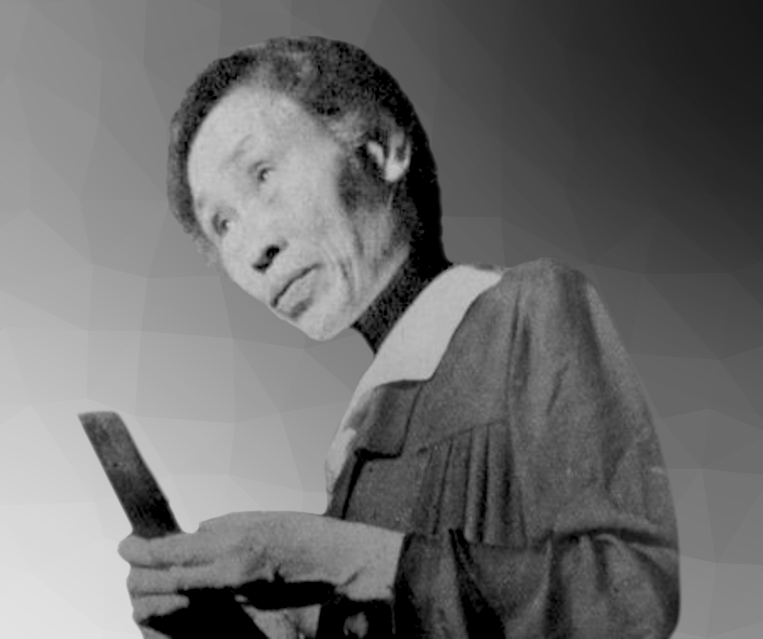Chika Kuroda (1884–1968) was the first woman to receive a Bachelor of Science degree in Japan, and only the second female student to complete a doctoral degree in science in the country. She worked in organic chemistry, and her research focused on plant dyes.
A Trailblazer at University
Chika Kuroda was born in Saga, Kyushu Island, Japan, on March 24, 1884 [1–3]. She attended the Women’s Higher Normal School in Tokyo (Tokyo Joshi Koto Shihan Gakko), Japan, studying science with a particular interest in chemistry. However, Japan’s national universities did not accept women at the time of her graduation in 1909, and thus, she had no access to further education in chemistry and worked as a teacher.
In 1913, however, Kuroda was the first woman to be admitted to the chemistry department at Tohoku Imperial University, Sendai, Japan, when the institution opened its doors to women. The admission of Kuroda and other pioneering female students was controversial at the time: Male students campaigned against their admission, and the Ministry of Education sent a letter of inquiry to the university [4].
Career
Kuroda graduated from Tohoku Imperial University in 1916 and was appointed Assistant Professor there. In 1918, she took up a position as Professor at Tokyo Women’s Higher Normal School. From 1921 to 1923, she studied at Oxford University, UK, under William Henry Perkin before returning to Japan. She then joined RIKEN (Institute of Physical and Chemical Research) in Wako, Japan.
In 1929, Kuroda completed her doctorate in chemistry. She was only the second woman to complete a doctoral degree in science in Japan, after Kono Yasui. In 1949, she was appointed Professor at Ochanomizu Women’s University, Tokyo. She retired in 1952 but continued to lecture as Honorary Professor. Chika Kuroda passed away on November 8, 1968, in Fukuoka, Japan.
Chika Kuroda received the first Majima Prize from the Chemical Society of Japan in 1936, a Medal with Purple Ribbon in 1959, the Third Class Crown of Honor in 1965, and was named a Third Grade Junior of the Court Rank posthumously.
Research
Chika Kuroda performed important research on many natural pigments. She started working on the topic under Majima Toshiyuki at Tohoku Imperial University. Kuroda was the first woman to give a talk to the Chemical Society of Japan in 1918, presenting work on a pigment from the plant Lithospermum erythrorhizon [5]. Her doctoral thesis featured her work on the pigment of Carthamus tinctorius (safflower). She also studied a variety of other dyes from natural sources, such as from the skins of eggplants and black soybeans.
Later on, Kuroda worked on naphthoquinone derivatives, including pigments found in the spines of sea urchins [6]. During research on pigments in onion skin [7], she obtained crystals of quercetin, an oxidation product of the pigment cyanidin, which contributed to the development of the blood pressure drug keltin C.
Chika Kuroda is the answer to Guess the Chemist (143).
References
[1] Y. Siderer, Kuroda Chika (1884-1968) – Pioneer Woman Chemist in Twentieth Century Japan, Substantia 2023, 7, 93–112. https://doi.org/10.36253/Substantia-1792
[2] Chika Kuroda—Japan’s First Woman Chemist, Ochanomizu University Digital Archives, archives.cf.ocha.ac.jp. (archived version accessed November 7, 2023)
[3] C. M. C. Haines, International Women in Science: A Biographical Dictionary to 1950, ABC-Clio, LLC, Santa Barbara, CA, USA, 2001, 164. ISBN 978-1-57607-090-1
[4] Tohoku University, A Day to Commemorate Japan’s First Female University Students, Tohoku University, Japan August 28, 2020. (accessed November 7, 2023)
[5] R. Majima, C. Kuroda, On the Colouring Matter of Lithospermum erythrorhizon, Acta Phytochim. 1922, 1, 43-65.
[6] C. Kuroda, H. Oshima, The Pigments from the Sea Urchins and the Syntheses of the Related Compounds, Proc. Imp. Acad. 1940, 16, 214–217. https://doi.org/10.2183/pjab1912.16.214
[7] C. Kuroda, M. Umeda, The Pigments and the Related Compounds in the Outer Skins of Onion Bulb, J. Sci. Res. Inst. 1951, 45,17–22.



